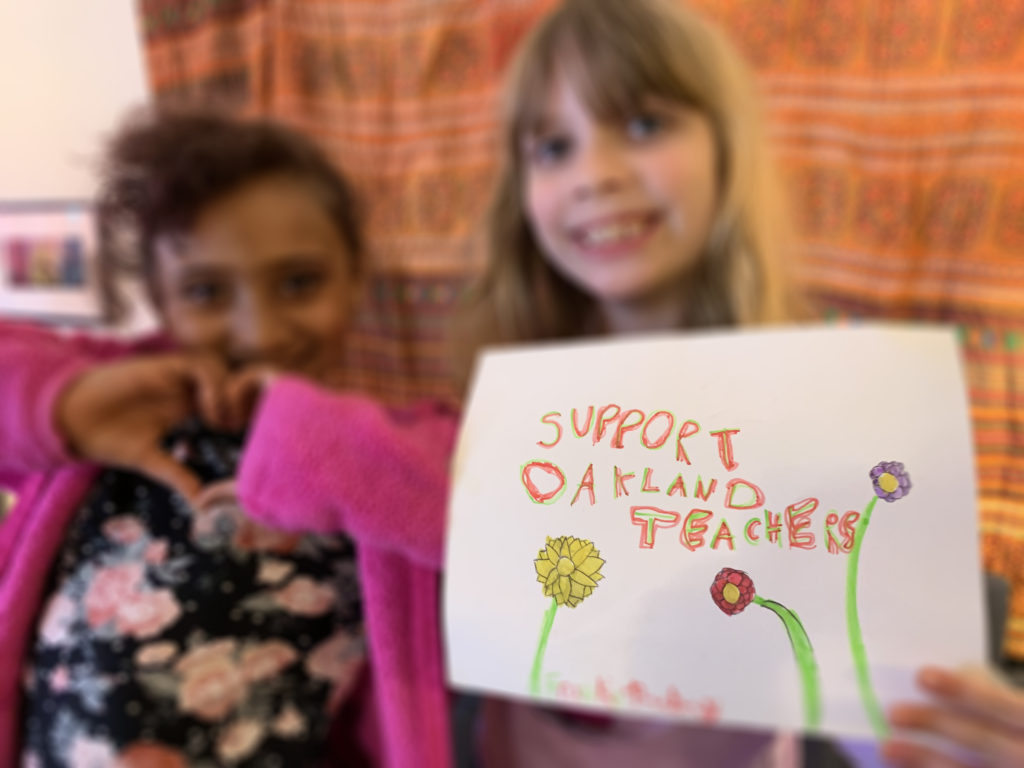Using strategic communication to support the Oakland teachers’ strike
by: Pamela Mejia
posted on Thursday, February 21, 2019
As a BMSG employee for more than eight years, I’ve repeated our mantras about developing an effective message more times than I can count: Lead with values, state the problem concisely, and be clear about the change you want to see.
We’ve applied that rubric to communication challenges ranging from tobacco control to sexual violence prevention, but this week I had the opportunity to apply it in a whole new way: talking to my 7-year-old about picket lines.

It all started when the Oakland Education Association announced plans to hold a strike after years of stalled negotiations with the district. My husband, a proud public school teacher, and I were committed to supporting the striking teachers and showing our solidarity with their cause, but we knew we needed to talk with our 7-year-old, whose life was going to be most directly impacted by our decision to keep her home from school to avoid crossing picket lines.
We sat down with her and, almost without thinking, fell into the messaging guidelines:
Lead with values: “Honey, I know we talk a lot about being fair — being fair at home, being fair at school. That’s one of the things you like best about Mr. W [her second-grade teacher] — he’s fair to everyone. Remember you told us that he makes sure that everyone at the table does the same amount on group projects, and when you do more work or do it really well, he gives you a star by your name? Well, we want to make sure that Mr. W and all the teachers get treated fairly, too.”
State the problem concisely: “Right now, teachers like Mr. W aren’t getting paid the amount of money that they need to live here in Oakland. They’ve been asking and trying to work together with the district — the people in charge of money — for a long time. It just hasn’t been working. It’s not fair that they’re working so hard for kids in Oakland and can’t even afford to live here.”
Be clear about the solution: “On Thursday, the teachers in Oakland are going to strike — that means not go to work — to show how important the work they do is, and that they deserve the money they’re asking for. And we can show that we think teachers are important and we want them to be treated fairly by not going in, either. When the district sees that people support teachers, they might try even harder to find a way to give them the money they deserve for all the hard work they do for you and all your friends. What do you think?”
After a long moment, my daughter nodded. “We should help Mr. W and the teachers.”
I have to admit, I felt pretty pleased with myself — but of course, she wasn’t finished: “I mean, teachers, should get money, because things cost money, so they need money to buy things, like at Target!” she said. “Plus, if I don’t go to school that day, we can go see The Lego Movie!”
Well, you can’t win ’em all.
Maybe my kid isn’t going start singing “Solidarity Forever” quite yet, but as a parent I’ve learned to take my victories where I can find them. If nothing else, this story is further evidence that strategic communication can help anyone make the case for the change they want to see — no matter how large or how small the audience.
If you want to learn more about how to put messaging strategy to work in your own life, check out our media advocacy resources.



